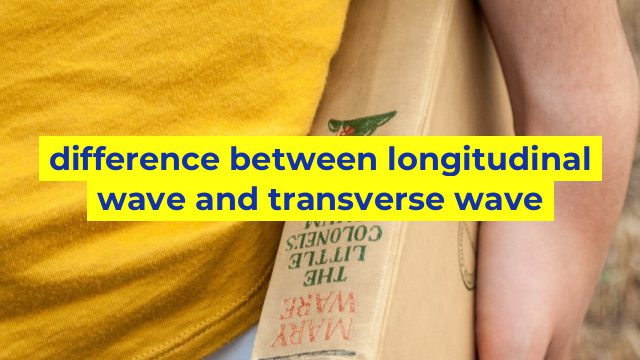The Difference Between Longitudinal and Transverse Waves
Introduction
In the world of physics, waves play a crucial role in the understanding of various natural phenomena. Two of the most commonly studied types of waves are longitudinal and transverse waves. Let’s take a closer look at the differences between these two types of waves.
What is a Longitudinal Wave?
A longitudinal wave is a type of wave in which the particles of the medium vibrate parallel to the direction of the wave’s propagation. In other words, the wave moves in the same direction as the vibration of the particles. Examples of longitudinal waves include sound waves and seismic waves.
One of the unique properties of longitudinal waves is that they can be compressed or rarefied. For example, in a sound wave, when the particles of air are compressed, they create a region of high pressure known as a compression. When the particles of air are rarefied, they create a region of low pressure known as a rarefaction.
What is a Transverse Wave?
A transverse wave is a type of wave in which the particles of the medium vibrate perpendicular to the direction of the wave’s propagation. In other words, the wave moves at a right angle to the vibration of the particles. Examples of transverse waves include light waves, water waves, and electromagnetic waves.
One of the unique properties of transverse waves is that they have a crest and a trough. The crest is the highest point of the wave, while the trough is the lowest point of the wave. Additionally, transverse waves have a wavelength, which is the distance between two consecutive crests or troughs.
What are the Main Differences Between Longitudinal and Transverse Waves?
While both longitudinal and transverse waves are types of waves, there are several key differences between the two. The most significant difference is the direction in which the particles of the medium vibrate. In a longitudinal wave, the particles of the medium vibrate parallel to the direction of the wave, while in a transverse wave, the particles of the medium vibrate perpendicular to the direction of the wave.
Another important difference between the two types of waves is the way in which they can be polarized. Transverse waves can be polarized, meaning that when they pass through a polarizer, they vibrate in only one direction. Longitudinal waves, on the other hand, cannot be polarized.
Conclusion
In conclusion, longitudinal and transverse waves are fundamentally different types of waves. While both have unique properties and applications, the most significant difference between the two is the direction in which the particles of the medium vibrate. Understanding these differences is crucial in the fields of physics, engineering, and even medicine.
Table difference between longitudinal wave and transverse wave
| Longitudinal wave | Transverse wave | |
|---|---|---|
| Definition | A wave that moves parallel to the direction of the wave. | A wave that moves perpendicular to the direction of the wave. |
| Shape | The wave shape consists of compressed and rarefied regions. | The wave shape consists of crests and troughs. |
| Propagation | In longitudinal waves, particles move back and forth parallel to the direction of the wave. | In transverse waves, particles move up and down perpendicular to the direction of the wave. |
| Speed | The speed of longitudinal waves depends on the material through which they travel. | The speed of transverse waves depends on the material through which they travel and the frequency of the wave. |
| Examples | Sound waves, seismic waves. | Electromagnetic waves, water waves, light waves. |
